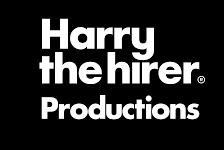THEATRE
3 Sep 2025
Beetlejuice, Beetlejuice, Beetlejuice!
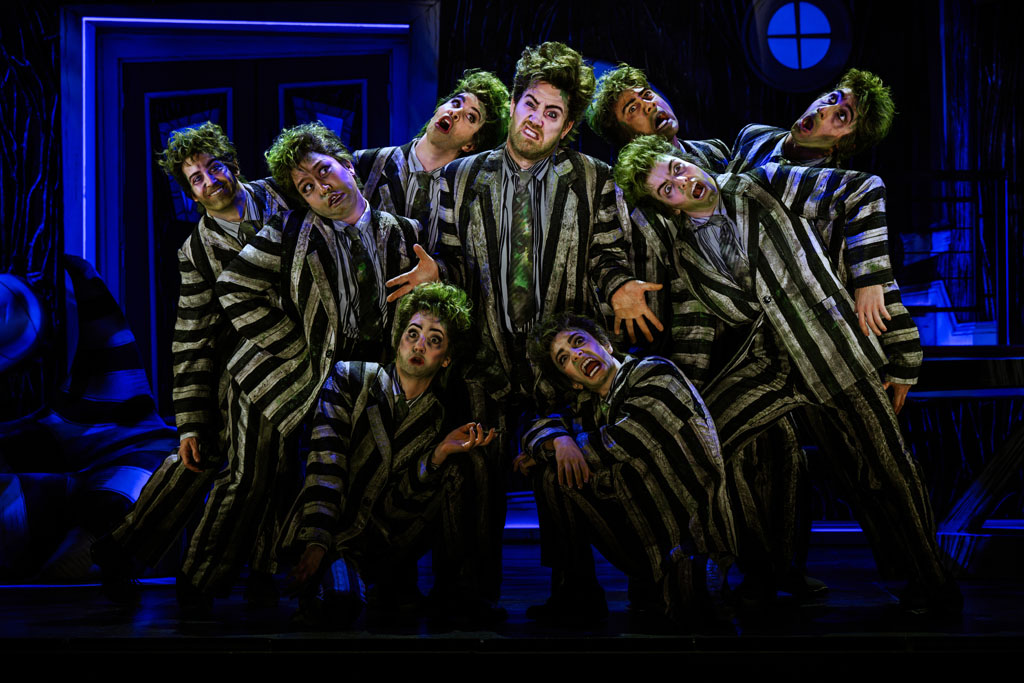
Subscribe to CX E-News
The cult movie turns musical with Meyer Sound
“This is a show about death!” sings Beetlejuice joyously as the first big musical number of Beetlejuice: The Musical blasts the full house at Melbourne’s Regent Theatre. Based on the cult 1988 Tim Burton film, this is the Australian premiere of the show that debuted on Broadway in 2018, with music and lyrics by Melbourne’s own Eddie Perfect.
Eddie himself appears as Beetlejuice in this production, joyously chaotic and loving every minute of it. The character breaks the fourth wall so often, it’s a miracle the proscenium arch doesn’t collapse. Barely a minute in and he announces that the story is a ‘bold departure from the source material!’ as we find out that young Lydia Deetz is grieving the death of her mother, which is a bit of a shock, because we all loved Catherine O’Hara’s legendary performance as Lydia’s mother Delia in the movie.
This is indeed a show about death; it’s inevitability, not getting to say goodbye when someone is taken suddenly, not doing what you always wanted before your time is up, and grief. Karis Oka as Lydia Deetz is responsible for carrying the emotional centre of the show, as well as all of the biggest vocal numbers, and does so flawlessly. The hapless couple Barbara and Adam Maitland, cursed to haunt their house forever after dying suddenly, are given much more depth than in the movie, their story being one of regret of not having followed their dreams.
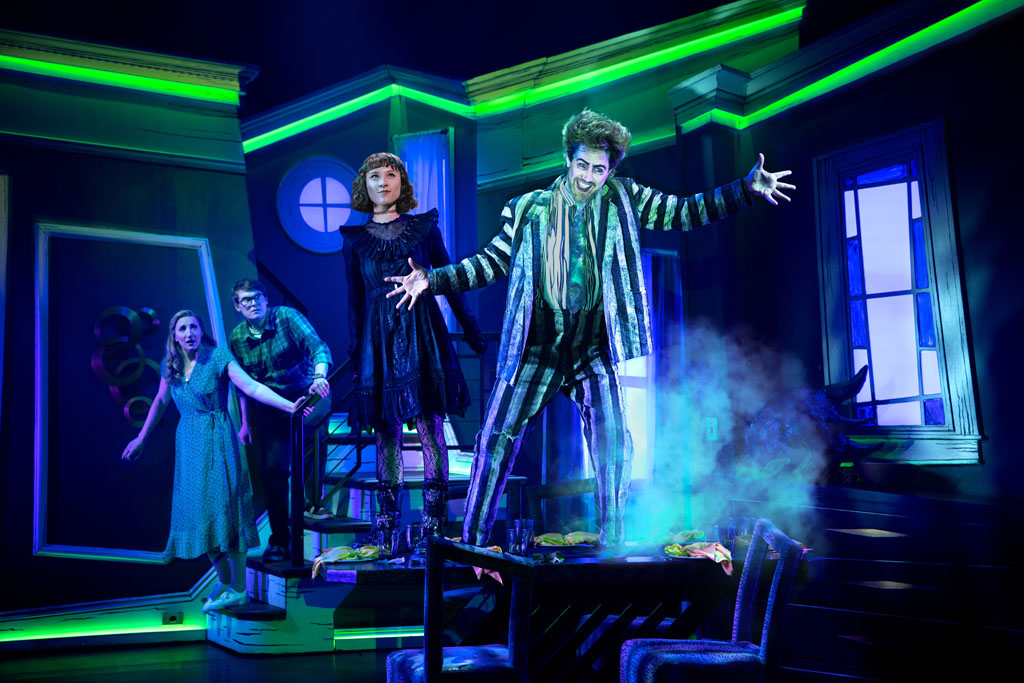
Some aspects are a love-letter to the movie; the recreation of Tim Burton’s aesthetics, including a giant black-and-white-striped sandworm, the wild set design, and some of the iconic moments from the movie (no spoilers, sorry!). The Regent herself gets in on the act, its over-the-top baroque decoration the perfect background to the Burton look.
A giant neon sign in the foyer welcomes you to The Netherworld, and on exit, warns you that you are re-entering The Real World. A not insignificant portion of the audience comes dressed as characters from the movie, or just inspired by the look.
Eddie Perfect’s music and lyrics are as crazy and dynamic as the bio-exorcist himself. Almost any style you can think of is thrown into the mix, often in the same song, and the dynamic goes from quiet grief to full volume anarchy. The original sound design was by New York’s Peter Hylenski, and Worldwide Sound Associate Justin Stasiw (also NY-based) came to Melbourne to hand the show over to Australian Associate Sound Designer Shelly Lee.
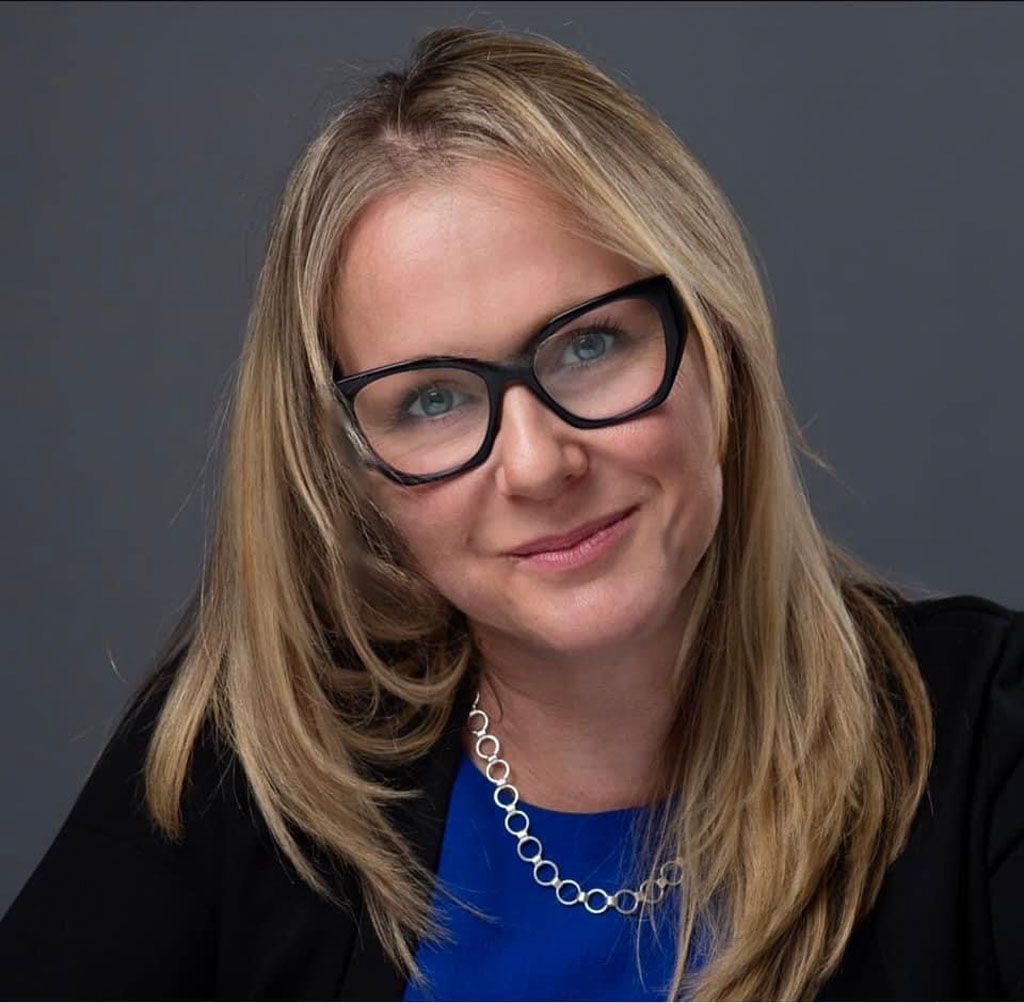
I’ve been tipped off that the sound design is very similar to that of Moulin Rouge! The Musical, another Hylenski design that won him a Tony, that I saw and reviewed way back in CX177 February 2022, in the same theatre.
I thought that was the finest sound I’ve ever heard in a theatre production, and Beetlejuice: The Musical doesn’t disappoint – it’s the same beautiful clarity, natural sound, fantastically musical bass and huge impact when it needs it.
The impact is from the Meyer Sound main PA, which consists of 14 elements of LEOPARD line array per side, flanked by five hung 900-LFC compact low-frequency control elements per side. The subs are augmented by two 1100-LFCs per side on the floor. The centre cluster runs eight LEOPARD loudspeakers, with two UPQs as downfills. A full delay truss at the back runs four Meyer Sound UPQ-D1and four 750-LFC. Under the massive underhang that is the Regent’s circle, there are six Meyer Sound USW-112P compact powered subwoofers and two rows of Meyer Sound UP-Junior delays.
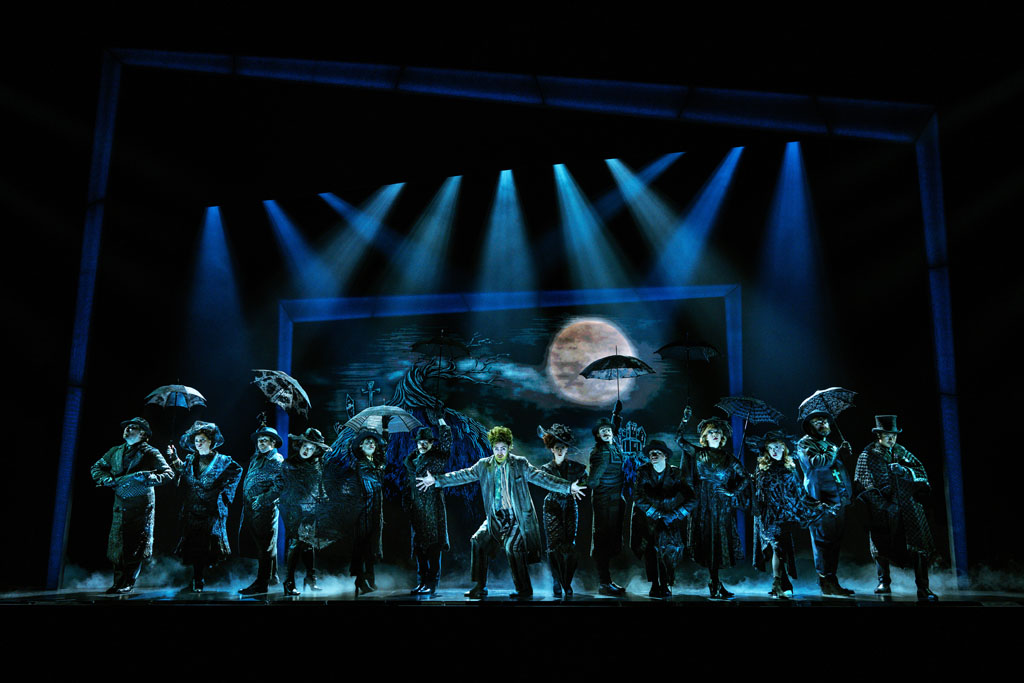
For extra coverage there are ULTRA-X22 side and front fill, with a full surround system for that cinematic experience. The whole system is processed through Meyer Sound Galileo GALAXY processors.
Production Engineer for the show, JPJ Audio’s Andrew Poppleton, technically assisted Shelly Lee and Justin Stasiw by getting the JPJ Audio provided system into The Regent and up and running. “It’s probably one of the smoothest installs we’ve done in quite a while,” he relates. “Meyer Sound boxes are very easy to rig, as they’re designed to get up and in quickly. Overall, from front to back, this is one of the best sound designs I’ve heard inside The Regent. The bottom end coverage has been implemented extremely well, especially underneath that massive overhang. The six little delay subs, the USW-112Ps, certainly pack a punch all the way to the back.”
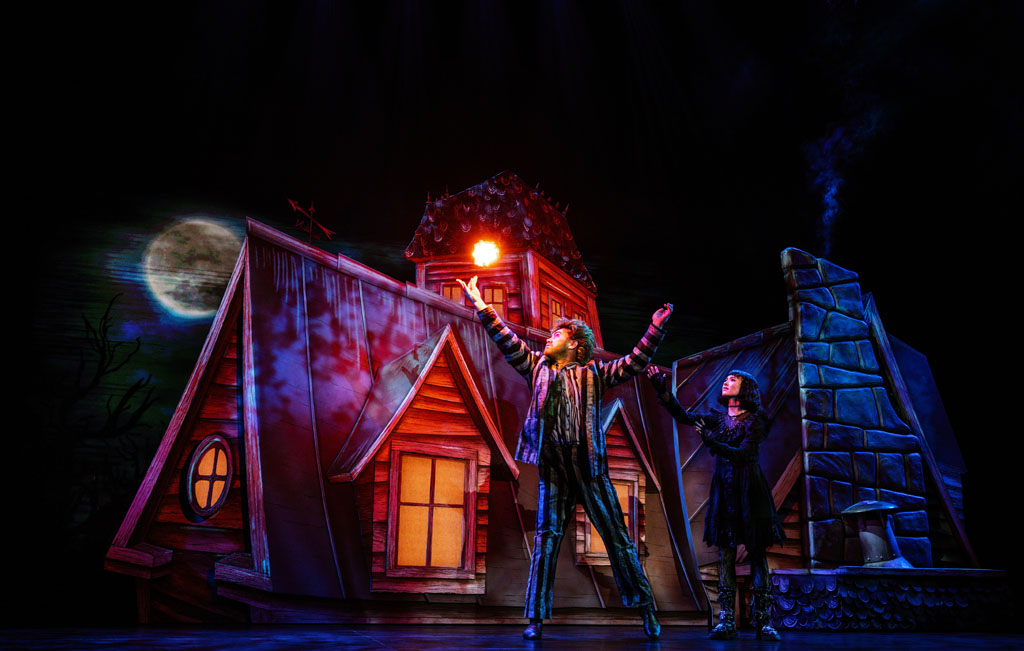
“It’s quite an impressive show, and everything works well,” continues Andrew. “I think the most impressive thing about it is just how tight the bottom end is, and how big the drums sound. I’ve heard this room with different configurations, but the tightness of those 900-LFCs and 1100-LFCs is something to experience for yourself.”
“It’s a fast-paced, action-packed show,” says Australian Associate Sound Designer Shelly Lee. “Unlike Moulin Rouge, the orchestra is in the pit. Some sound designers like all the mics on the orchestra to be voiced the same way and come from the same manufacturer, but Peter Hylenski is all about the right mic for the right instrument, so we have mics from Royer, Sennheiser, Shure, Neumann, and DPA. All of the musicians have Allen & Heath ME-1 personal mixers, fed by Dante, and dial in their own monitor mix.”
One of the really striking things about the sound design for Beetlejuice: The Musical is the density of sound effects – there’s hundreds, which is another Hylenski signature. There’s so many, there’s a separate SFX operator at FoH.
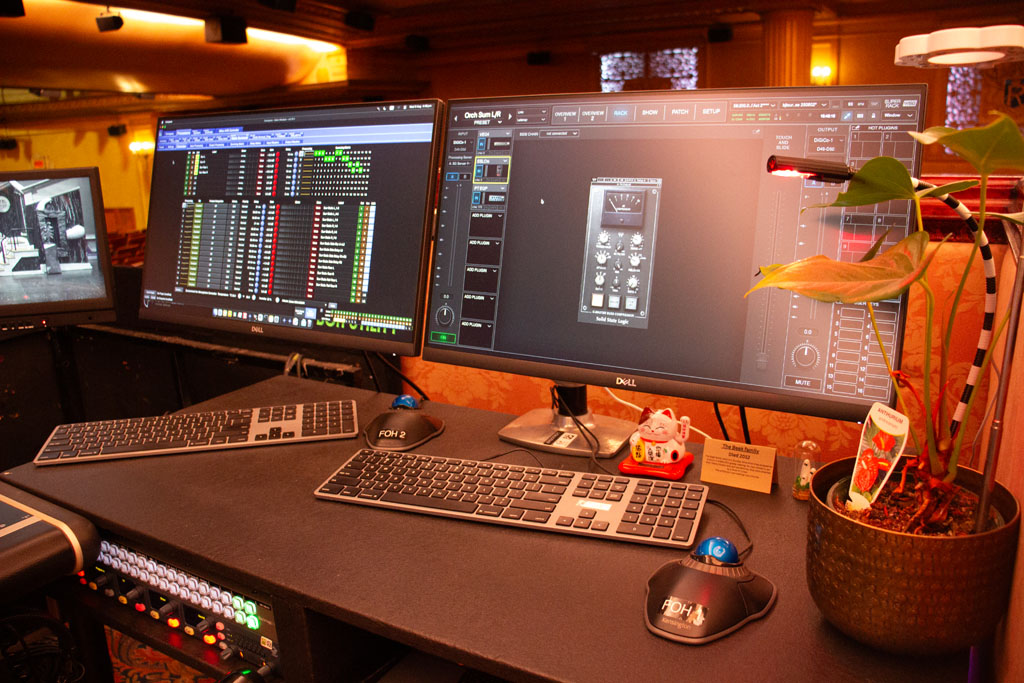
“Anthony Craythorn is our head of department, and he’s our main mix operator,” continues Shelly. “Then we have Ghiovanna De Oliveira; when we opened, she was our sound effects operator. Some sound effects are fired by time code, some are fired by Anthony from the sound desk, but the majority of them are fired directly by the sound effects operator who is firing them in response to hand gestures or timing. Lighting and projection also fire a couple, and we fire a few of theirs. There is probably a sound effect in every line of the show somewhere.”
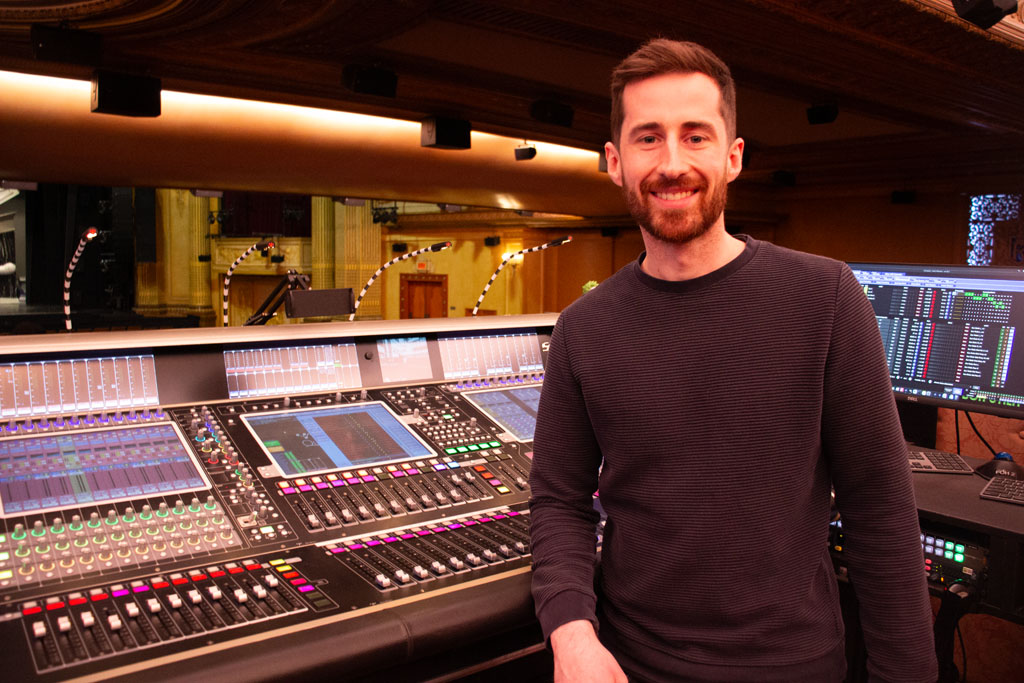
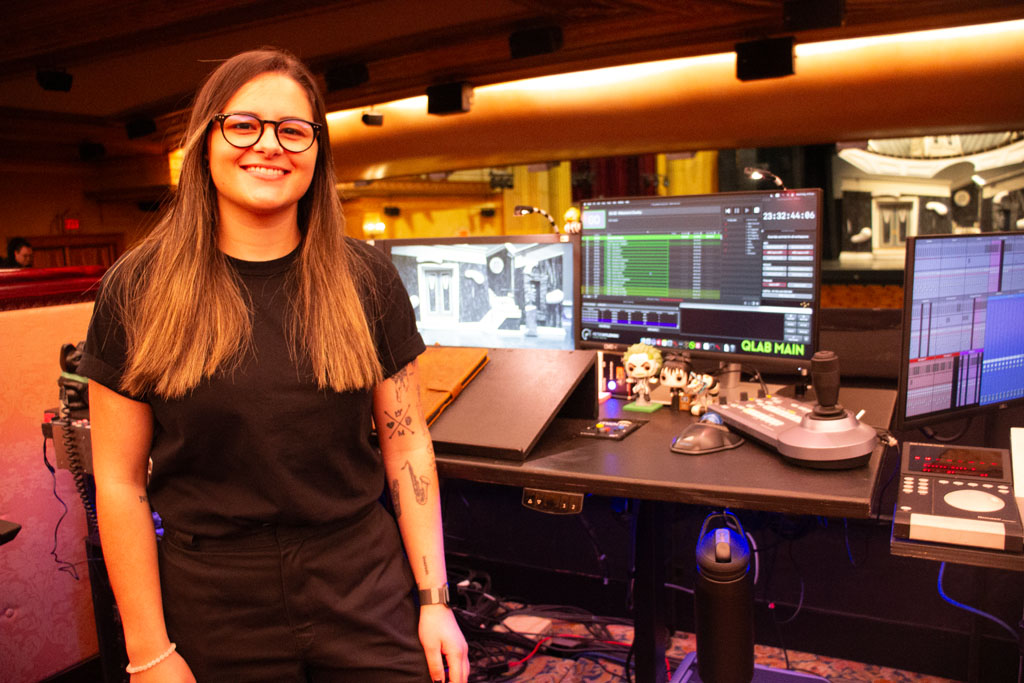
On the day I saw the show, I dropped in to meet Ghiovanna and Anthony and check out their FoH mix position. Ghiovanna is Deputy Head of Sound, and is the main mix operator four times a week. “We have four members in the department,” explains Anthony. “Backstage, we’ve got Luke and Monique. Luke covers everything out here as well, so we’re triple covered on everything.”
The sound effects set-up is fascinating. There’s three monitors; one showing four camera feeds, one a main camera, and the other QLab. There’s a PTZ camera controller, and a six-button MIDI Go Box controller from UK manufacturer That Little Box recessed into the desk, which has adjustable height. Both FoH operating positions are decorated with Beetlejuice toys and props, and Ghiovanna has given the black desk lamps white sandworm stripes with PVC tape!
“I tried to make this set-up as custom as I possibly could,” says Ghiovanna. “For example, this MIDI Go Box, if it sits up on the desk instead of sitting flush and you’re operating it for hours a day, it’s really painful. So I’ve recessed it and made it as flat as possible.”
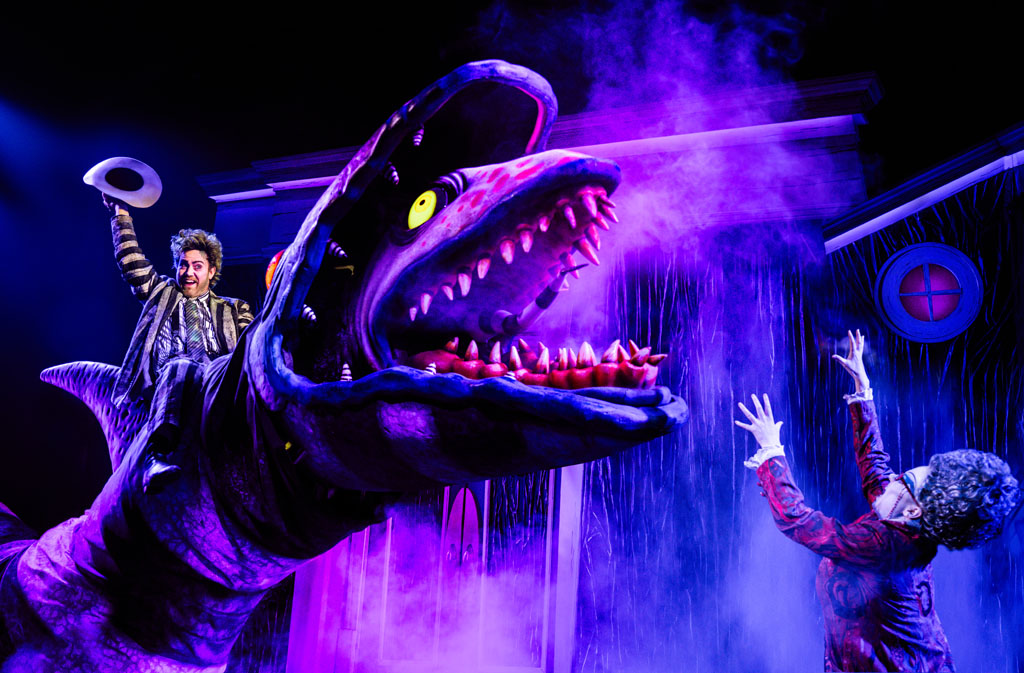
The extensive PTZ camera infrastructure is all in aid of the SFX operator hitting their cues.
The operators have control, and zoom in on details like hand gestures so they can hit their cues with perfect comic timing. It’s an intense job that takes a lot of concentration. Even the height adjustable desk is important for this – some cues need you to be standing, some sitting, depending on how tall the operator is.
QLab is working hard on this show; “I have two QLab machines that are running constantly, with one redundant,” continues Ghiovanna. “If anything fails in the primary machine, I hit a switch, and a GPIO trigger flips the output to the second machine and triggers the DiGiCo SD7 to use its alternate inputs. We have time code coming from our Ableton rig in the pit.
I send MIDI to lighting, and lighting sends it back because there’s a lot of cues when I am triggering sound effects that are also lighting triggers. We have all of our KVM control up here, and can get into any part of system running on the show, including our GALAXY processors.”
All up, there are an astounding 353 sound effects cues. “I trigger 253,” states Ghiovanna.
“The other 100 are a combination of lighting and time code. We got the QLab file from the US tour. In pre-production, I was in the rehearsal room with the cast, which I have never done before. I had the base layer of the file, and as we went through rehearsals, they started adding more cues. For some of the cues, things changed. I had to source those cues until they found something else to replace them. Once we got into the venue, Shelly Lee and Justin Stasiw adjusted most of the volumes. But then once we hit previews, they asked, ‘What do you think about this? How do you think this lands?’ and we edited from there.”
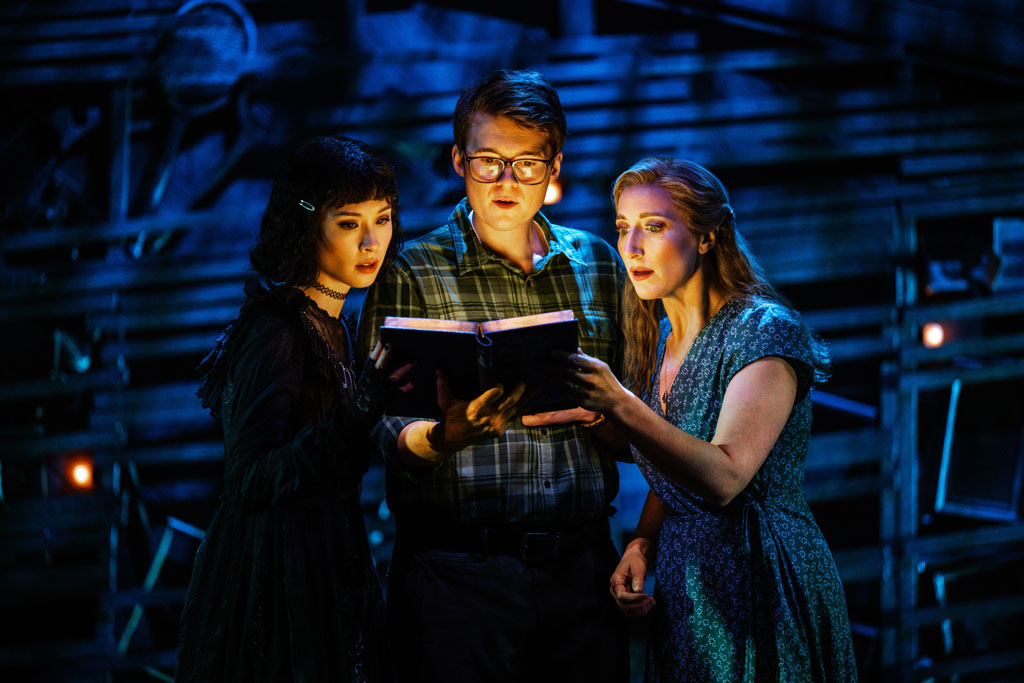
Over on the SD7, Anthony Craythorn is wrangling a more modest 301 cues. “It’s actually a little less than that, because some of them are check cues, but there’s still quite a lot of desk cues,” he says. “The only sound effect cues that I fire are voiceovers that I have to line up with what I’m mixing and the action on stage.”
There are16 channels coming into the DiGiCo SD7 from SFX. “All the levels of the effects are handled in QLab, so the desk is just a routing machine,” Anthony continues. “We’ve got a surround side left-right and a surround rear left-right for the sound effects. They’re also bussed into front of house left/center/right. It’s almost like 7.1, but very custom, and nothing like any sort of Dolby standard. It’s very much ‘How can we make this work in the space?’
We still have so much control over it. We used TiMax’s panLab software to program the QLab panning. You hear it quite dramatically in the pre-show music, with all the stems of the track rotating around the room at different rates.”
Anthony and Ghiovanna are both enjoying the front of house PA. “The Meyer Sound LEOPARDs really push all the way to the back of the venue, and you get a really great sense of the stereo imaging, even all the way up here,” relates Anthony. “Surprisingly, even though I’m predominantly mixing off of under balcony fill and surrounds, you still get an incredible sense of depth. The centre cluster is quite high up, so I get a phantom centre.
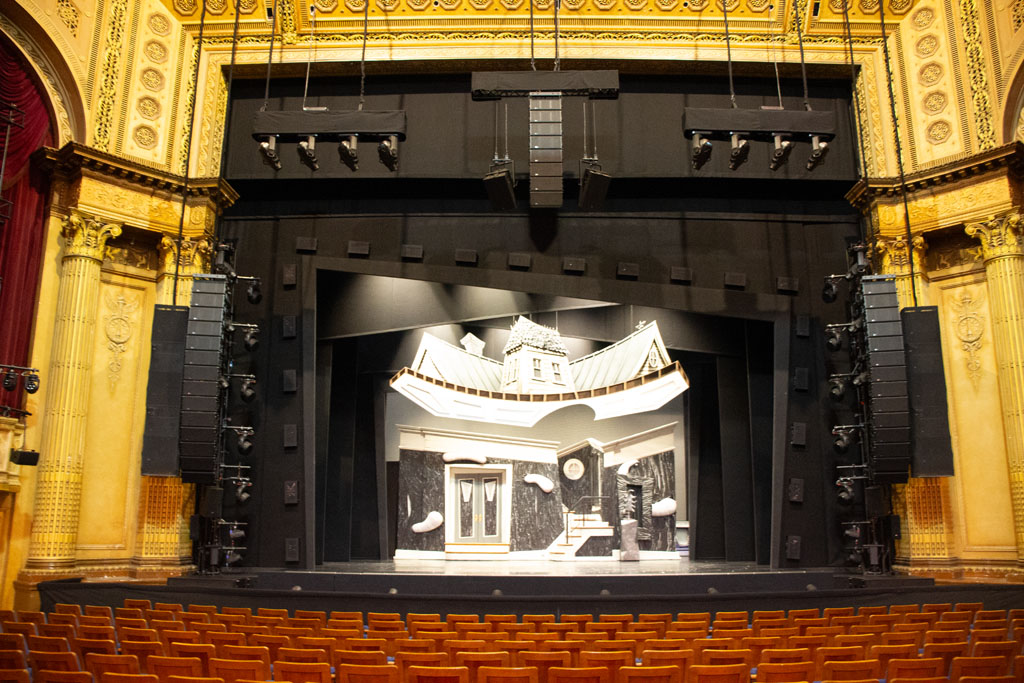
By the time it gets back to here, I’m getting that vocal image back through the delays, which are in mono, but you still get that sense of left/right. It’s very transparent, and it’s a dream to mix on.”
The mix operators have their work cut out for them. “It’s very dynamic show,” understates Anthony by quite some margin. “Eddie’s music is crazy. It goes from death metal, to ska, to jazz in one song. The first five minutes of the show is bonkers in terms of dynamic range, and it really translates through the system. We have careful compression through stages; we have input compression and bus compression, doing little bits along the way to help keep the mix in a certain window. In terms of mixing the band group, I’m controlling that post compression.
We then artificially add back in those big dynamics that we need to create. It is a more produced sound; it’s not completely open, but it’s done in careful layers.”
After the show wraps in Melbourne in mid-September, it’s heading to Etihad Arena in Abu Dhabi for 10 shows, where they will black half of it off and turn it into some approximation of a theatre. After that, it’s set to run in Singapore. It’s showtime!
Main Photo by Michelle Grace Hunder
Subscribe
Published monthly since 1991, our famous AV industry magazine is free for download or pay for print. Subscribers also receive CX News, our free weekly email with the latest industry news and jobs.





